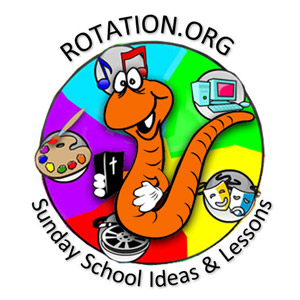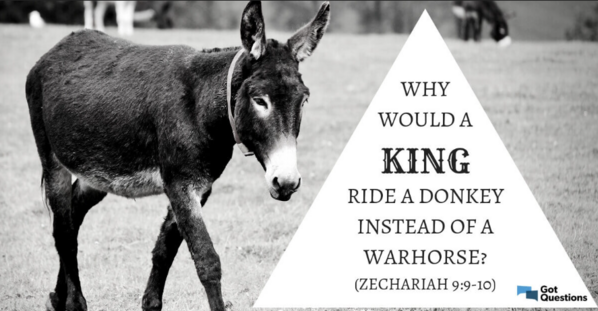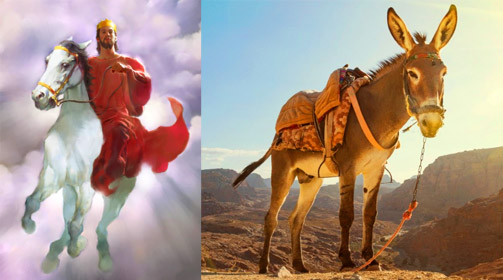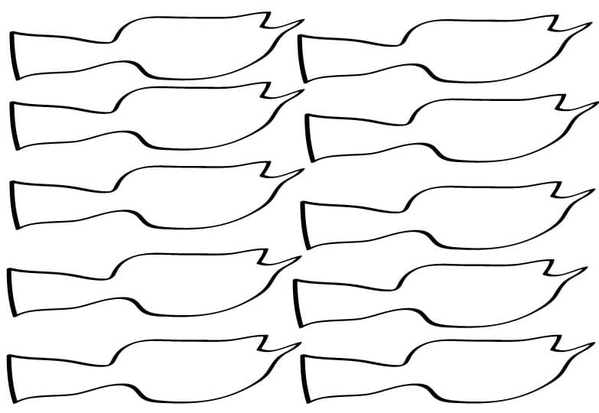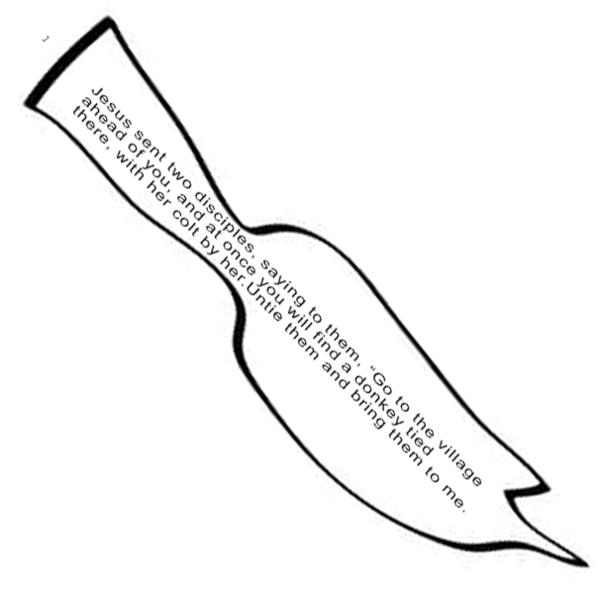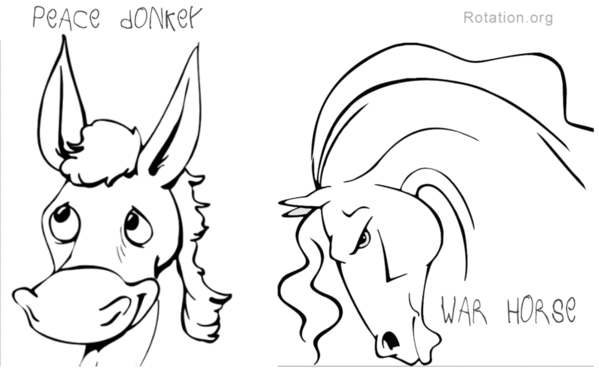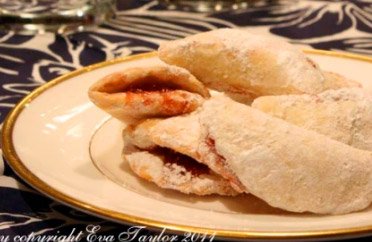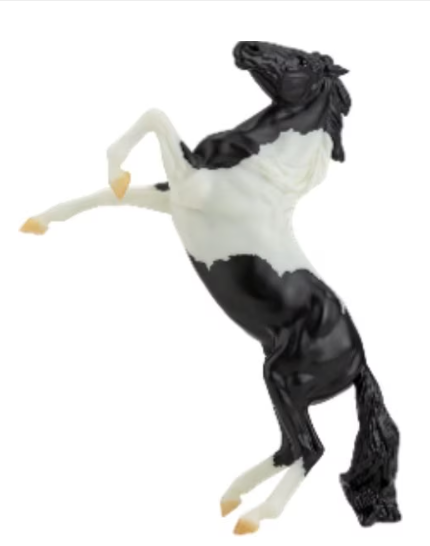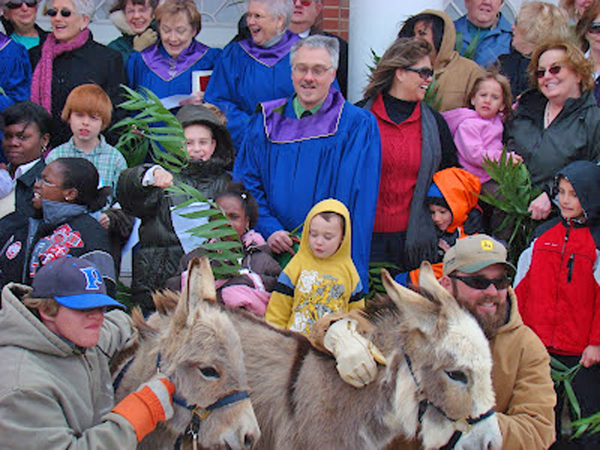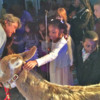I  "Palm" Sunday -- the parade, the joy, the waving of palms, the palm crafts. But check this out: "palms" were not the symbol Jesus chose to ride in on. Palms are what "the crowd" chose. Jesus chose a donkey which is an important biblical symbol about just what kind of messiah/savior Jesus is. (More about that in a moment.)
"Palm" Sunday -- the parade, the joy, the waving of palms, the palm crafts. But check this out: "palms" were not the symbol Jesus chose to ride in on. Palms are what "the crowd" chose. Jesus chose a donkey which is an important biblical symbol about just what kind of messiah/savior Jesus is. (More about that in a moment.)
THE DONKEY is a great teaching point when we want to focus on WHO and WHY we are cheering, so maybe we should also be looking at donkey-related lesson ideas and activities to help teach these points. Palms --i.e. what we are saying/waving BACK to Jesus, is another topic.
In subsequent posts in this topic, let's share our "donkey" ideas for Palm Sunday ![]() But first, I like to draw lesson and activity inspiration from the scripture itself, so I'm sharing this closer look at the symbol of the donkey and passages from Zech and Isaiah to help my understanding and reveal some teaching ideas to me., then I'll share some donkey ideas for Palm Sunday and hope you will too.
But first, I like to draw lesson and activity inspiration from the scripture itself, so I'm sharing this closer look at the symbol of the donkey and passages from Zech and Isaiah to help my understanding and reveal some teaching ideas to me., then I'll share some donkey ideas for Palm Sunday and hope you will too.
<>< Neil
To begin, here's an excerpt from the excellent article at ChristianityToday.com titled:
This Palm Sunday, Ponder Donkeys, Not Branches
John writes, “They took palm branches and went out to meet him” (John 12:13). Why did the crowd choose palm branches? It could simply have been that palms were nearby. But history tells us there might have been a deeper reason: Those (palm) plants were symbolically linked to military victories and Messiahship.
A generation before Jesus, when Simon Maccabee drove Israel’s enemies out of Jerusalem, people celebrated by waving palm branches:
On the twenty-third day of the second month, in the one hundred seventy-first year, the Jews entered it with praise and palm branches, and with harps and cymbals and stringed instruments, and with hymns and songs, because a great enemy had been crushed and removed from Israel. (1 Mac. 13:51, NRSV)
As Russell Moore writes, “Jesus is right in saying this sort of hatred and violence never leads where we think it will—to a vanquishing of all of our enemies and to a victory for ‘us,’ whoever ‘us’ is.”
Jesus picked a symbol that emphasized humility and lowliness instead of military strength.
What's "the donkey" all about?
...and how we can turn this knowledge into lesson ideas!
Of course, there's that passage in Zechariah 9:9 about The Messiah who comes "lowly and riding on a donkey." Throughout his ministry, Jesus understood the importance of symbolism, and telling his disciples to get him a donkey is a great example of that.
But to REALLY UNDERSTAND Zechariah and Jesus' Donkey, you have to read more than just Zech 9:9. YOU ALSO NEED TO READ Zech 9:10 (which few do in church).
I will cut off the chariot from Ephraim
and the war horse from Jerusalem;
and the battle bow shall be cut off,
and he shall speak peace to the nations;
his rule shall be from sea to sea,
and from the River to the ends of the earth.
In other words, the donkey is not a "war horse," it is a symbol of peace.
The ears were a dead giveaway ![]()
So often we teach that the donkey was a symbol of "humility," when more specifically, the donkey shows that the Messiah comes in peace, instead of with condemnation, judgment, and punishment. Jesus' peace is not just for the Jews, it's for the Gentiles too, even your enemies. It's for nations and communities, families and between individuals. And it's even for that part of you that needs to be healed. In that respect, "peace" and peacemaking are the very definition of "what it means to be humble."
This image of the Messiah as a "peacemaker" is very reminiscent of Isaiah 2:4 -- which is another familiar description of the Messiah that Jesus would have been well-acquainted with:
He will judge between the nations and will settle disputes for many peoples.
They will beat their swords into plowshares and their spears into pruning hooks.
Nation will not take up sword against nation, nor will they train for war anymore.
Palm Sunday's peacemaker parade and Jesus' quip in Luke 19:40 that "even the rocks would cry out." are also very reminiscent of Isaiah 55:12
You will go out in joy and be led forth in peace;
the mountains and hills will burst into song before you,
and all the trees of the field will clap their hands.
(Teaching Idea: So maybe we should be depicting mountains and hills BURSTING FORTH
and trees clapping their hands.)
Clearly, a humble peacemaker was not the kind of messiah that the Maccabeans or Pharisees wanted or expected. And because Jesus did not fit their expectations, they tried to silence him. The stone that the builders rejected has become the chief singing stone!
From a Sunday School lesson activity point of view, both Zechariah 9:9-10 and Isaiah 2:4 and Isaiah 55:12 are full of objects and actions that can be depicted, acted out, and even turned into games (stop the chariot, break the bow). Donkeys, bursting (blooming?) mountains, trees clapping their hands.
Okay...enough Bible musing, I'm going to post a few ideas and encourage others to do the same.
